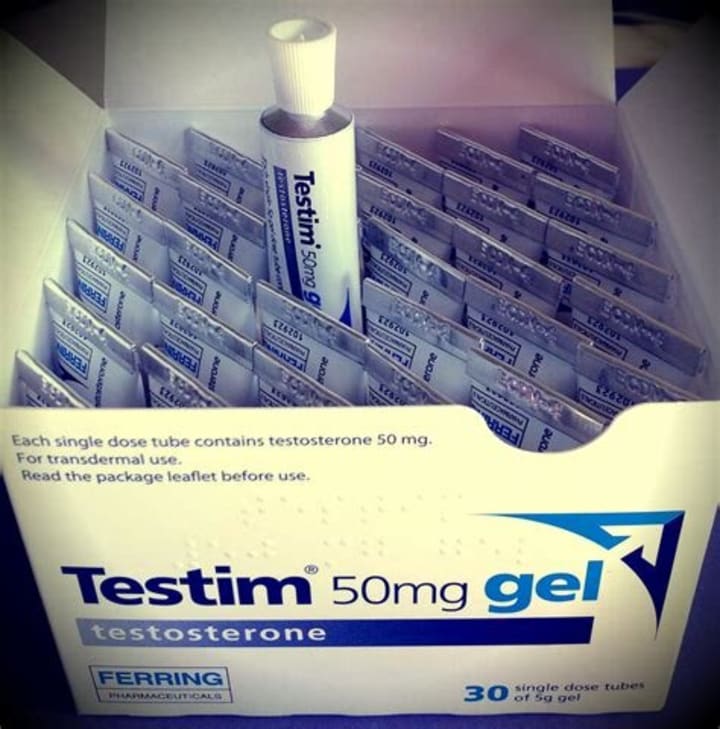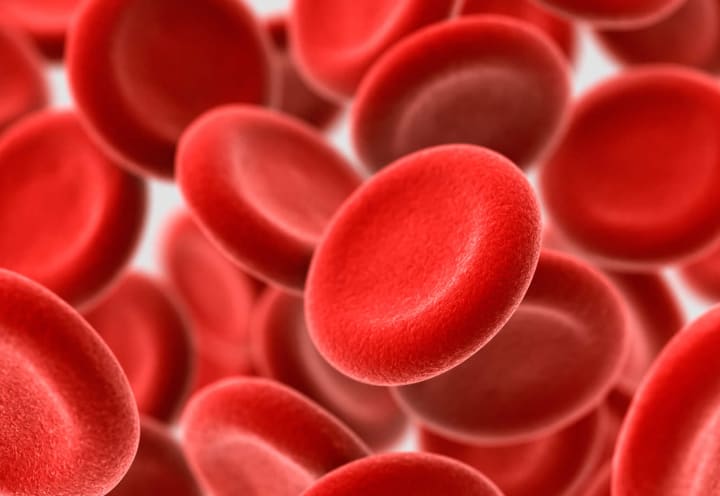What They Don't Tell You About Testosterone
Everything you need to know about transmasculine hormone therapy.

This article discusses anatomy and needles.
Hi, I'm Danny, and I've been on testosterone for two and a half years. When I met with my doctor in early 2022, I was taught the basics of testosterone replacement: how to do it, what it will change, and things to look out for. But like many transmasculine folks, I just took the doctor's word instead of doing my own research - and this means that I was greeted by many unexpected things during my transition journey. I wouldn't change anything, of course. With all the new information I've learned since starting testosterone two years ago, I think it'd be helpful to share with others who are just beginning their journey, or who just have an interest in being a better ally.
What is masculinizing hormone therapy? Overview, Brands, and Routes of Distribution.
All bodies produce testosterone, just as all bodies produce estrogen. However, those assigned female at birth produce testosterone in low amounts. Masculinizing hormone therapy is gender-affirming treatment used to secondary sexual characteristics designated with being assigned male at birth (AMAB). Testosterone can be taken by transmasculine or non binary people who were assigned female at birth (AFAB). Transgender people do not have to experience dysphoria. It's also not mandatory to undergo hormone therapy. Some transgender people prefer to take hormones in order to feel more comfortable in their bodies, while others aren't interested. No matter what choice a trans person makes, they are valid and deserve a place in the community.
Female-to-male (or FTM) hormone replacement can be given several different ways. It's important to follow the advice of a healthcare provider to ensure your treatment is safe, effective, and best catered to your body and preferences. Because testosterone is a controlled substance, it must be taken under request and guidance of a healthcare professional. Before beginning treatment, you'll meet with a healthcare provider to discuss personal goals, and likely to undergo physical examinations and lab tests to ensure optimal health. Testosterone dosages vary by doctor and individual goals - I was started in 2022 on .25 mL weekly via subcutaneous injection, and later had my weekly dosage increased to 50 mL. This was considered by my doctor to be a maximum dose.
Methods Of Delivery
01. Injection
Injections are the most common way to administer testosterone. These can be done via intramuscular injection (IM) or subcutaneous injection (Sub-Q). Intramuscular injections involve sending a sterile liquid form of testosterone into a muscle, generally into the large muscles of the outer thigh. This can be painful due to direct contact with muscle and the length of the needle: 22-23G and 1-1.5 inches in length, on average. Subcutaneous injections involve sending a sterile liquid form of testosterone into a fatty area of the body, such as the stomach or inner thighs. Needles used for subcutaneous injections are typically thinner and shorter than those used for intramuscular injections. As an example, the needles I use for subcutaneous injection are 30G needles, and 5/8 of an inch in length.
Another difference between injection types is the timeline between injections. Intramuscular injections can be done weekly or biweekly due to the capacity of muscles to hold larger dosages of medication. Subcutaneous injections should be done weekly, as fat tissue holds medication supplies for less time than muscle tissue. All injection types can cause irritation, redness, or tenderness at the injection site - this is a normal reaction to disrupting blood vessels, and will likely last for only a few days.
Types of injectable testosterone include cypionate and enanthate.
02. Patches, Gels, or Creams
Application of testosterone through the skin almost always occurs daily, meant to supply a steady, constant dose of testosterone. This leaves less room for hormone fluctuations. Although testosterone patches or gels are more expensive than injectable testosterone, it is the preferred method for many with an aversion to needles.
Androderm is a non-invasive patch placed on the skin. It allows a steady flow of testosterone into the body, but can cause skin irritation and decrease the rate of masculinization. Androgel is a testosterone gel which gets placed on the skin.
03. Testosterone Implants
Testosterone implants are a less common method of hormone distribution due to their cost and side effects, but are effective because of their continuous release of testosterone into the bloodstream. This delivery method involves the implantation of a testosterone pellet about the size of a grain of wheat. The pellet, called Testopel, is implanted by a medical professional into a layer of fat underneath the epidermis. Testosterone levels peak approximately one month after implantation, and remain consistent for approximately four to five months.

What changes can be expected from testosterone?
It's important to note that the timeline of effects is not the same for everyone. Small changes may become visible after a couple months, but the maximum effects of testosterone on the body can take years to complete. Changes and timeline depends on individual genetics, so it's important not to compare your timeline to the timeline of others. There are many well-known effects of testosterone, including:
- Oily skin and/or increased acne
Skin texture is likely to change, which means that skin care routines will likely need to be changed or altered as well. Skin becomes more rough, and pores may increase in size and/or consistency. Breakouts are common, especially for those whose skin was acne-prone even before beginning hormones.
- Cessation of menstruation
For me, this happened at around the six month mark, but it varies for everyone. Some transmasculine folks do not see a change in menstruation at all. Others may have a brief pause in menstruation, and see a return months or even years into taking hormones.
- Facial and body hair
Something I didn't know pre-transition was that growing facial hair is itchy. It usually doesn't take super long to see the beginning of fuzz in places it never was before: new hair begins to appear at around the three month mark. Of course, like every other change, it can take years to see the full effect of hair growth and redistribution on the body.
- Redistribution of body fat
Fat begins to deposit in the abdomen and hips.
- Male pattern baldness
Hair loss and thinning on the scalp is highly dependent on genetics.
- Deepening of voice
Thickening of the vocal cords cause voice pitch to drop over time. This can cause scratchiness or dryness of the throat.
- Bottom growth
A build up of testosterone in the body leads to clitoral growth, which can be very itchy and uncomfortable - especially early in transition, as this was one of the first changes that I noticed. In addition to growth, a decrease of estrogen in the vaginal lining causes atrophy, which can increase the frequency of urinary tract infections.
What They Don't Tell You About Testosterone
Even more than two years into transition, I'm still discovering new side effects of testosterone. Hormones change every aspect of your body - in ways that are obvious, and in ways that are not so obvious. As important as it is to understand all the ways in which testosterone will change the body, there has not been enough studies on its effects on transmasculine patients to fully understand. Some lesser known adverse effects include the following:
01. Increased red blood cell count
Testosterone plays a role in the production of red blood cells. As a blood donor, I learned recently that cis men have higher red blood cells than cis women, and therefore I can donate blood more often on testosterone than I could before. The difference in RBC count has to do with the iron that is lost during menstruation.
02. Increased hemoglobin
Hemoglobin is a protein that carries oxygen through the blood. Because hemoglobin is found inside red blood cells, its levels will be increased with the increased production of red blood cells.
03. Polycythemia
Polycythemia is an abnormally high level of red blood cells. Polycythemia thickens the blood, making it difficult to pass through smaller blood vessels. Although it's uncommon for testosterone usage to contribute to polycythemia, it is a possible health effect of long-term use.
04. Conversion of excess testosterone into estrogen
Like many trans people first starting on their hormone journey, I was impatient for changes. Medical transition is a slow and often frustrating process, and sometimes, the temptation exists to take more than the prescribed dose of testosterone in the hopes of seeing changes faster. In bodies assigned female at birth, there is an enzyme called aromatase - which holds a key role in the production of estrogen. If there is an over-abundance of testosterone in the body, it will be converted to estrogen in order to maintain a normal hormone level within the body. This conversion of estrogen could result in even slower metabolization of testosterone.
05. Urinary tract infections and yeast infections
Due to the vaginal atrophy caused by a lack of estrogen, transmasculine people on testosterone have a higher susceptibility to urinary tract infections. When I began taking hormones, I saw almost three times the amount of UTI's I had in a year.
06. Fertility
Testosterone is not birth control. It's possible to become pregnant while taking testosterone if no method of birth control is used regularly. However, long-term use of testosterone usually has an impact on the fertility of transmasculine people, and it may be permanently affected even if hormone usage is stopped.
07. Belly button lint
Here's kind of a funny one. Since starting hormones, there always seems to be lint in my belly button - even if I recently showered. I've spoken to several transmasculine friends, who have all had the same experience.
08. Changes in sexuality
Obviously, testosterone can't change your sexuality. If you are bisexual before beginning hormones, you will still be bisexual years into it. However - it's common among transmasculine people to notice a change in the intensity of sexual attraction after starting testosterone. It's not really known why this is. As a bisexual person, I noticed an increase in my attraction to cisgender men, and a slight decrease in my attraction to cisgender women. My preference, if you will, seemed to change drastically from one to another.
09. Changes in shower temperatures
The temperature of shower water is another thing that seems consistent among transmasculine people I've spoken to. Pre-transition, I took very hot showers. Now, I can't stand much more than lukewarm.
10. Veins!
Due to the increase of red blood cells in the body and the thickening of blood, your veins become more prominent. This seems to be most noticeable in the hands, arms, and feet.
11. Endometrial tissue
Some physicians believe that long-term use of testosterone can stimulate symptoms of polycystic ovarian syndrome. Because of the cessation of menstrual periods, it's not uncommon for transmasculine people to develop a buildup of endometrial tissue. This buildup occurs because tissue cannot be shed if menstruation does not occur. Transmasculine people who have not received a hysterectomy should undergo regular cervical checks, as a buildup of endometrial tissue has been linked to endometrial or ovarian cancer.
12. Acne
Acne occurs when oil and dead skin cells clog skin pores. Cystic acne occurs when these skin cells are also clogged by bacteria, causing cysts that can be large and painful. Long-term use of testosterone can increase the size of pores in the face, which can lead to frequent breakouts, or even cystic acne.

Sources
https://my.clevelandclinic.org/health/treatments/22322-masculinizing-hormone-therapy
https://ftmguide.org/tandhealth.html
https://ftmguide.org/myths.html
https://www.ncbi.nlm.nih.gov/pmc/articles/PMC8744429
https://transcare.ucsf.edu/article/information-testosterone-hormone-therapy
https://www.verywellhealth.com/testosterone-for-transgender-men-4688488
https://ftmguide.org/ttypes.html
https://www.femaletomale.org/ftm-transitioning-guide/testosterone-hrt/hrt-delivery-methods/
https://www.folxhealth.com/library/hrt-subcutaneous-intramuscular-injections
https://www.icliniq.com/articles/blood-health/effects-of-testosterone-on-red-blood-cell-production
About the Creator
choreomania
i'm a a queer writer, poet, cat lover, and author. i'm passionate about psychology, human rights, and creating places where lgbt+ youth and young adults feel safe, represented, and supported.
29 | m.
follow me on threads for more.
Enjoyed the story? Support the Creator.
Subscribe for free to receive all their stories in your feed. You could also pledge your support or give them a one-off tip, letting them know you appreciate their work.






Comments
There are no comments for this story
Be the first to respond and start the conversation.